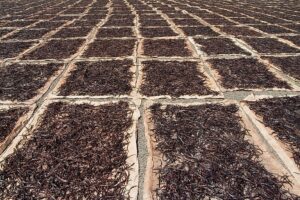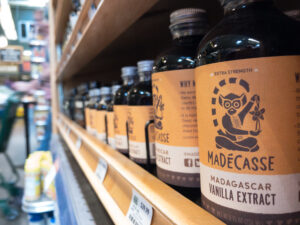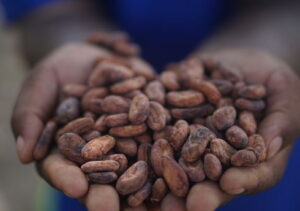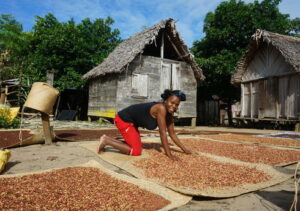Made in Madagascar
When you visit the grocery store, how often do you check the labels to see where your products came from? Living in a global economy, most of us are unphased by stickers and tags that list faraway countries as the point of origin for our daily consumables. While some of us may shop for local produce or buy gifts from local makers, we might be surprised to learn that some of our common purchases come from places like Madagascar! During a time of the year when we might be doing a little more shopping than usual, it’s worth wondering where in the world our products come from, and what the story behind them might be.

Vanilla pods dry in the sun. Vanilla is a labor-intensive crop, but profits can be high.

Madagascar vanilla extract can be found in most American grocery stores.
Madagascar is known primarily for its beautiful wildlife and stunning biodiversity—namely lemurs. But when it comes to exports, Madagascar has a different claim to fame. Madagascar is the world leader in vanilla production, supplying roughly 80% of the world’s vanilla and producing around 2900 tons per year (as of 2020). Because vanilla requires highly specific and complicated cultivation practices, it is the second most expensive spice on the market, right below saffron. This means that people growing vanilla in Madagascar can potentially make a good living, as long as agricultural problems like drought, fungus, and monsoons don’t affect their crop output. Most of Madagascar’s vanilla is grown in the SAVA region, in the northeast. There are many efforts in place in this region to promote sustainable vanilla farming that minimizes habitat disturbance, making the thought of Madagascar vanilla even more delicious.
Vanilla is the leading export for Madagascar, but there are many other products that originate there as well. Some of these products are not for commercial consumption, like raw minerals, but more familiar, commercially available products include many familiar flavors. Cocoa, coffee, cloves, sugar, and pepper are just some of the agricultural exports that Madagascar ships around the world. It’s not uncommon to see these products on grocery store shelves here in the United States, especially as the US is one of Madagascar’s top trade partners. In 2019, Madagascar sold $8 million worth of agricultural products to the US, $3 million of which was vanilla. Along with the United States, France, Germany, China, and Japan are also top trade partners with Madagascar.

A Malagasy cocoa farmer shows a handful of cacao beans, which are ground into cocoa powder.

A Malagasy farmer dries cloves in the sun after a harvest.
The majority of people living in Madagascar today work in the agricultural sector, whether farming for their families and communities, or producing cash crops like vanilla, coffee, and cacao. Agricultural trade and demand for Madagascar products can have an enormous effect on the lives of Malagasy farmers and agricultural workers. The next time you go shopping, consider spicing up your holiday baked goods with Madagascar vanilla, cloves, or cocoa, or think about how your purchasing decisions might affect someone growing food in your area.
Sources:
https://ustr.gov/countries-regions/africa/madagascar
https://wits.worldbank.org/countrysnapshot/en/MDG
https://www.worldatlas.com/articles/the-leading-countries-in-vanilla-production-in-the-world.html

